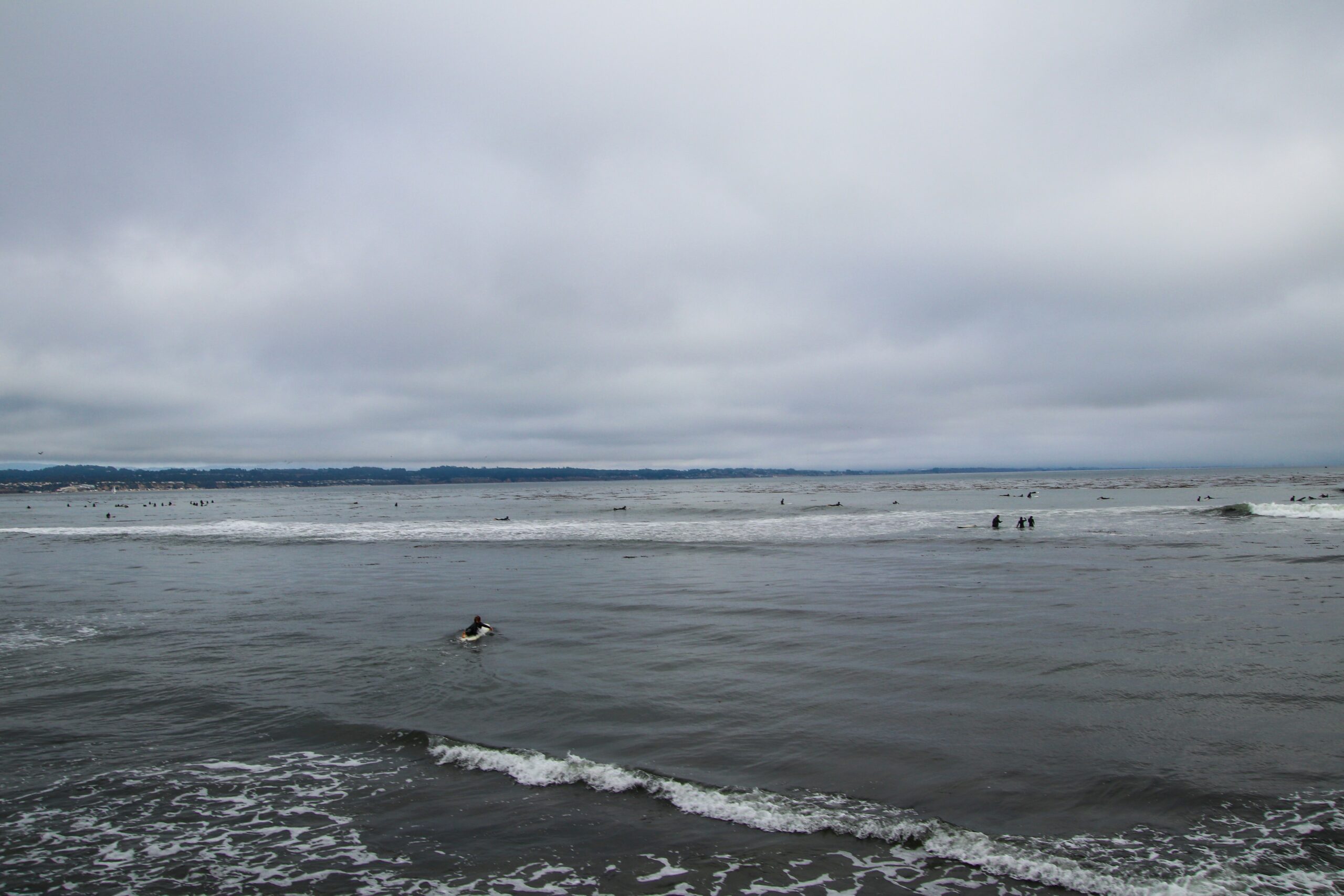The Santa Cruz Wharf, a historic landmark and popular tourist destination, recently experienced a significant collapse. This incident has sent shockwaves through the local community and beyond.

The collapse has raised numerous questions about the structural integrity of the wharf. It has also sparked discussions about the safety of similar coastal structures. This article aims to delve into the causes and implications of this unfortunate event.
We will explore the immediate aftermath of the collapse, including the response from emergency services. Eyewitness accounts will provide a firsthand perspective of the incident.
We will also delve into the history of the Santa Cruz Wharf, its construction, and any prior safety concerns. The impact on local businesses, the environment, and the community at large will also be discussed.
Finally, we will look at the future of the Santa Cruz Wharf, including plans for repair and reconstruction. Join us as we investigate this significant event in Santa Cruz news.
The Moment of Collapse: What Happened?
On a seemingly ordinary afternoon, a section of the Santa Cruz Wharf unexpectedly gave way. The collapse took place at the outer edge, where the wharf extends into the ocean.

Witnesses reported a sudden cracking sound before the structure fell. Visitors at the time were stunned as part of the wooden decking crumbled into the ocean below.
As panic ensued, security personnel quickly moved people away from the damaged area. Luckily, quick actions ensured that there were no immediate injuries reported.
This pivotal moment has become a defining event in recent Santa Cruz news. It has left locals and visitors alike grappling with concerns about safety and structural integrity.
Immediate Response and Emergency Services Action
Emergency services arrived swiftly after the collapse of the Santa Cruz Wharf. Firefighters, paramedics, and police coordinated efforts to secure the area.
Their primary focus was ensuring public safety. They quickly evacuated all civilians from the vicinity to prevent further risks.
Once evacuated, emergency personnel assessed the structural damage. They prioritized identifying any potential hazards remaining in the unstable section.
The response teams worked with admirable efficiency. Their efforts minimized the impact on those present and set the stage for thorough investigations.
Local authorities praised the professionalism and rapid actions of the emergency services. Their quick response likely prevented casualties and further disaster.
Eyewitness Accounts and Personal Stories
Witnesses of the Santa Cruz Wharf collapse shared vivid accounts. Many described hearing a loud cracking sound moments before the structure gave way.
Several visitors were on the wharf when it began to fall. People ran in panic, unsure of where safety lay amid the chaos.
A local vendor described the scene as chaotic. His voice, tinged with disbelief, expressed the collective shock felt by those present.
One tourist recalled the incident with a tremor in her voice. She noted the rapid response of nearby individuals to help one another.
These personal stories highlight the human aspect of the disaster. They offer a poignant reminder of the community spirit during such shocking events.
Historical Significance and Structure of the Santa Cruz Wharf
The Santa Cruz Wharf has a storied past. Established over a century ago, it has served as a central hub for commerce and tourism.
Constructed with robust timbers, the wharf was an engineering marvel of its time. It spanned hundreds of feet into the ocean, providing access for boats and ships.
Beyond its commercial utility, the wharf became a cultural landmark. Generations of families have visited it, creating lasting memories amid its bustling activity.
Despite its age, the wharf underwent periodic maintenance. These efforts ensured it remained structurally sound to accommodate diverse activities.
The collapse marks a significant chapter in its history. It reminds us of the balance between preserving heritage and ensuring public safety.

Prior Concerns and Safety Inspections
Prior to the collapse, there were murmurs about the wharf’s condition. Some locals voiced concerns, citing visible wear and tear on the structure.
Safety inspections were conducted periodically, in line with regulations. These evaluations aimed to identify potential weaknesses and ensure visitor safety.
Inspection reports highlighted maintenance needs but didn’t indicate imminent danger. Repairs were planned but delayed due to resource constraints and logistical challenges.
Recent weather conditions posed additional stress on the aging structure. Experts noted that harsh coastal elements accelerated the wear process.
Community members were aware of past maintenance issues. Yet, few expected a collapse to occur, emphasizing the need for consistent oversight.
Analyzing the Potential Causes of the Collapse
Structural experts are assessing various factors that could have led to the collapse. Preliminary investigations suggest a combination of age and environmental stress.
The wharf’s timber pilings, exposed to constant salty air and water, may have weakened over time. This exposure would compromise the integrity of the structure.
Climatic fluctuations, including recent storms, likely exacerbated existing vulnerabilities. Increased pressure and force can accelerate deterioration.
Past inspections noted minor damages, but no major repairs followed. Over time, these issues might have compounded, leading to failure.
Ongoing investigations will examine all potential causes thoroughly. Expert analyses aim to prevent such incidents in the future.
Impact on Local Businesses and the Community
The collapse of the Santa Cruz Wharf has significantly affected local businesses. Many vendors rely heavily on the daily foot traffic the wharf brings.
For many, the wharf was a hub of activity. Its closure disrupts sales and could impact livelihoods. The economic shock reverberates through the community.
Beyond commerce, the wharf held cultural importance. It was a place for gatherings, performances, and events, essential to community life.
Residents express worry over the loss of a beloved landmark. For many, the wharf is tied to personal and communal memories.
Community leaders are working on temporary solutions. It’s crucial to support affected businesses and preserve the wharf’s cultural role.
Environmental and Ecological Considerations
The sudden collapse has raised ecological concerns. Debris from the wharf threatens marine life in the bay below.
Experts worry about pollution from wood preservatives. Chemicals leaching into the water can harm local ecosystems.
The wharf area is home to diverse marine species. Any disruption could have long-lasting environmental effects.
Efforts are underway to assess and mitigate damage. Authorities are prioritizing quick, effective cleanup methods.
Environmental groups urge swift action. Their goal is to minimize the impact on marine biodiversity and ensure ecological recovery.
The Future of Santa Cruz Wharf: Repair and Reconstruction Plans
The path to rebuild the Santa Cruz Wharf is complex. City officials are discussing short-term and long-term plans for its reconstruction.
Engineers have begun assessing the structural integrity of the remaining sections. This step is critical for ensuring safety during any rebuilding efforts.
Funding is a significant concern for reconstruction. Authorities are exploring both local and federal sources to finance the repair efforts.
Community input will play a vital role in shaping the new wharf’s design. Stakeholders aim to balance historical preservation with modern safety standards.
The timeline for reopening remains uncertain. However, officials express hope that portions of the wharf will be accessible sooner rather than later.
Conclusion: The Road Ahead for Santa Cruz Wharf
The Santa Cruz Wharf collapse serves as a wake-up call for infrastructure management. While daunting, this challenge also presents an opportunity for positive change and innovation in coastal engineering.
The journey ahead will require cooperation from engineers, city officials, and the community. Together, they can work towards a safer, more resilient wharf that continues to enrich Santa Cruz’s vibrant coastal culture.



